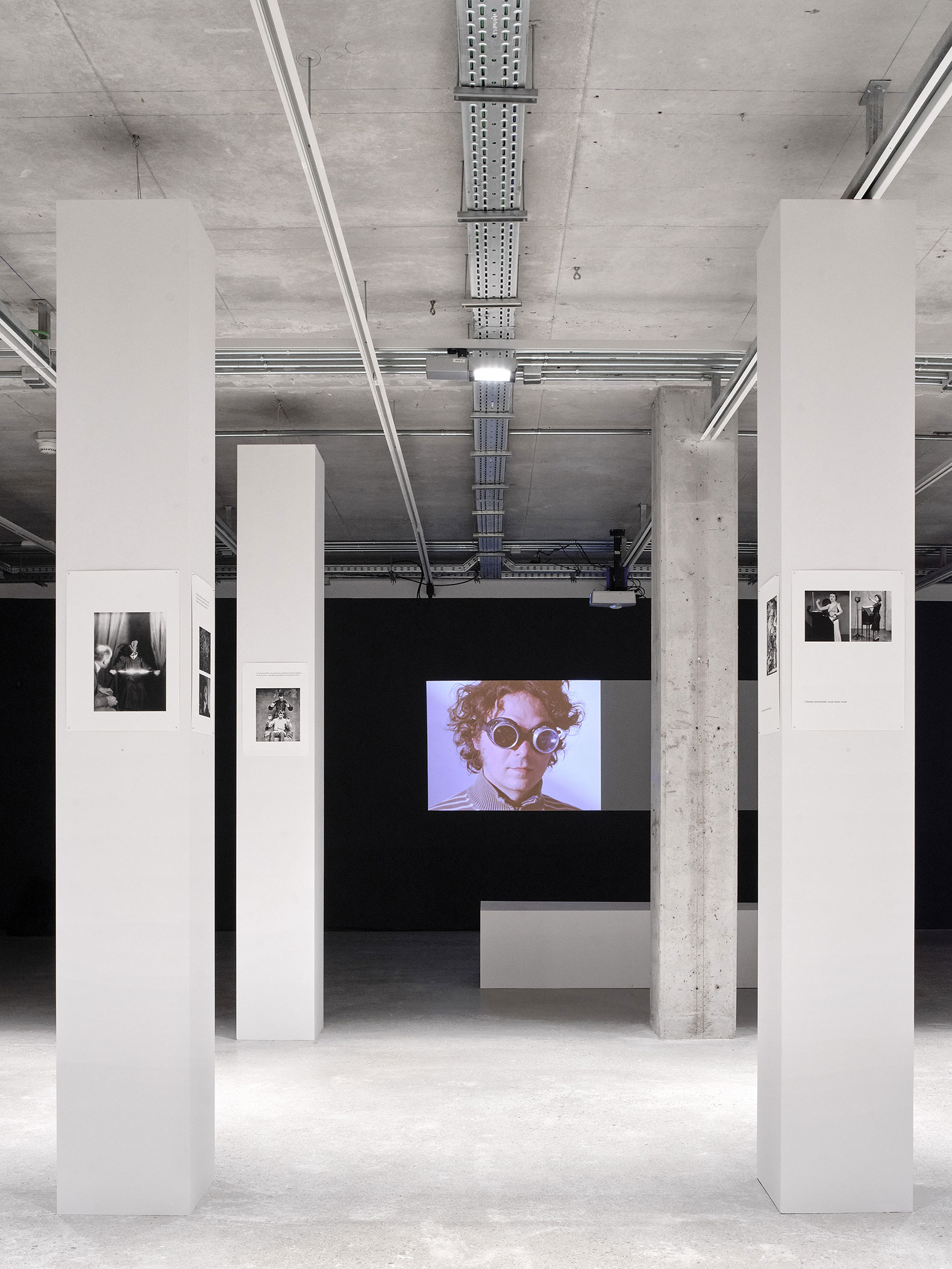The exhibition renounces subjecting the experience of the space to a given line of discourse; the device entrusts the viewer to recognize its syntax and synthesize its story as a result of the experience that the exhibition space generates.
The main elements of the exhibition design are the three pre-existing concrete pillars in the room. With these three, an orthogonal matrix of non-structural pillars is drawn around it that dilutes the perspective.
Other works by Ramón y Cajal, August Strindberg, Vicente Huidobro, Roland Sabatier, and Jakob Mohr, among others, are exhibited in the four cardinal points of the plot.

Cinema Paper, Érik Bullot by Taller Ponti. Photograph by José Hevia.
Descripción del proyecto por Taller Pontí
Dreaming up a film. Setting out the fragments of an upcoming, imaginary film in space. But, how to spread out the linearity of the film in the three dimensions of space? How to create, from the drift, the experience of a narration? Unfinished? Infinite? Alive?
The exhibition renounces the linear development, typical of the museum wall, in favor of the drifting, free, and patterned, typical of the hypostyle room. Instead of subjecting the experience of space to a given line of discourse, the device entrusts the syntax of its narrative to the experience of the same space it generates, to the experience of its drift.
The starting point is the three pre-existing concrete pillars. The proposal superimposes an orthogonal matrix of fake columns that incorporates and dilutes them. Outside, at the four cardinal points of the weave, there are four prisms (three tables and a bench) where -with works by Ramón y Cajal, August Strindberg, Vicente Huidobro, Roland Sabatier or Jakob Mohr, among others- four of the possible readings of the exhibition are grouped.































